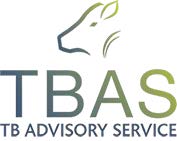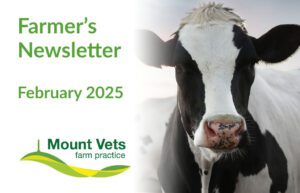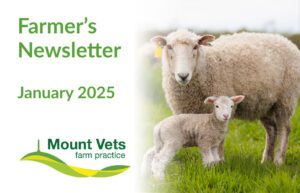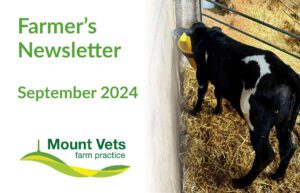January 2022
We hope that everyone had a great start to this year and that you all managed to avoid the latest and greatest variant of COVID-19 that has been circulating. This year, the reception team are returning to the two person protocol that we had during much of 2020/2021. It would be very much appreciated if you could inform the lovely ladies of any extra work that needs doing (such as PDs/castrates/dehorning) at the time of booking so they can keep us running as efficiently as possible.
Bespoke TB Advisory Visits
From January 2022, the TB Advisory Service (TBAS) will be running their free, bespoke advice visits again. This project originally ran from 2017 through to 2021 and was a DEFRA funded project aimed at getting more personalised advice out to farms within the High Risk Areas of England. DEFRA has deemed this initial project a success and as a result are rolling it out to the rest of England and opening it up to all owners of livestock (not just cattle). It is open to everyone regardless of current TB status and farms that had a visit in the previous iteration of the project are welcome to have another one for free.
We have several TBAS advisors here in the practice (David Balch, Ollie Judkins and Tony O’Loughlin) who have attended training to deliver the advice visits. The visits entail a walk around the farm buildings and fields to look for any signs of wildlife, and then a risk assessment report that is carried out through the TBAS app to identify the main risk pathways for bovine TB entering and spreading through a herd. At the end of each visit, there will be some simple, practical and personalised advice given that we think will reduce the impact of TB to your farm.
Pneumonia, the old enemy, but what’s new?
Vet advice and farmers’ ongoing efforts in youngstock disease exposure, nutrition and environment is still as relevant as ever. But what is new in our approach to pneumonia, which might help tip the balance in our favour?
- New bugs. We are seeing a significant rise in the number of pneumonia outbreaks due to the bug Mycoplasma. This type of pneumonia can be very severe and may not respond well to the treatments available to us. So, if you feel that your usual treatments are not as effective, it may be that the pneumonia-causing bugs on your farm have changed.
- Diagnosing the type of pneumonia. Should one of your calves be overcome by the disease, we can now send off a lung sample, even if the calf has been treated with antibiotics, and the labs have new tests which will identify the bugs present in the lung. Blood tests are also more heavily subsidised by drugs companies than ever, so we can hope to have a good picture of the bugs involved from just one visit and a few samples.
Vaccination. We are using pneumonia vaccines more than ever. This will involve using vaccines you are aware of in different ways to help younger calves, as well as importing vaccines in some instances to help fight new challenges like Mycoplasma.
The last few months have been hugely challenging for farmers and vets dealing with pneumonia. If you have had trouble, please be reassured that you are in very good company. Should you be interested in understanding how these advances might help your youngstock, our vets would love to hear from you at the practice.
Upcoming Courses
8th March 1 day Refresher Artificial Insemination
Our 1-day AI refresher course is aimed at previous attendees of our 4-day AI course. We also welcome anyone who feels they are lacking in confidence with getting cows in calf or perhaps haven’t had much opportunity to AI cows since attending the course.
You can expect to have a condensed refresher on both theory & practical training. You will also be given advice and guidance to improve your techniques and boost your confidence. With part of the day being on farm, you will get to put your training into practice.
It costs £150 + VAT, with a £50 deposit to reserve your place.
For more info email: nicole.jales@mountvets.com or call 07587054487
Fresh air for calves - Open Air Factors and Positive Pressure Ventilation
A recent review of ventilation of calf housing highlighted an important factor – no matter how we assess the ventilation in a building we must never forget the need to deliver fresh air to the animals in that building. The term – Open Air – refers to clean fresh air. And Open Air Factors – OAF – refers to factors within this fresh clean air that actively reduce the virulence and viability of pathogens like viruses and bacteria that cause respiratory issues. Hence as we assess calf buildings – the primary focus must be on the delivery of fresh air to the calves.
Most calf buildings will never be ventilated by the Stack Effect – young calves will not produce enough heat to create a stack effect. So, most calf buildings depend on wind to ventilate them. Our predominant wind direction is from the SW – how is your calf building located to make the most of this wind? Will this wind ventilate your building and deliver fresh air to all parts of the building? Is the calf shed downwind from the other livestock buildings so the air is fresh and clean?
So instead of assessing your building in terms of ventilation and removal of stale air – focus on the delivery of fresh air to the calves. Yes, air temperature and air speed must be considered at calf level, but they can never have too much fresh air. Unless you have a purpose-built calf shed then it is unlikely that it will be able to be uniformly ventilated by wind. There are options to improve certain parts of a shed – perforated panels and curtains can be used to increase air intake for parts of a building.
(Calf accommodation that is within a larger shed with mixed age groups in – these sheds will be very challenging to ventilate properly. There is always an exposure to stale air from older livestock, increasing disease pressure.)
Tube Ventilation – Positive Pressure Ventilation – is one very effective way of delivering fresh air within a building where the calves need it. I was always sceptical of these systems – but when you see them as fresh air delivery systems then we can appreciate them. Essentially the system uses a fan to draw clean air in, which is then distributed within the building by the tube. Each building will have different requirements – installation of a PPV system requires someone who can measure and assess the building and install a bespoke system. The aim is an air speed of 0.3m/sec at 1.2m above the floor – anything above this will chill the calves. These systems are not expensive and should provide a good ROI over many years.
We can help assess sheds, look at fresh air delivery, and measure air speed within a shed. This is all part of any assessment of a respiratory disease outbreak.
Have a question about any of the topics covered in this newsletter?
If you need any assistance with the topics covered in this newsletter, please do not hesitate to get in touch with our experienced farm vets who will be able to help. Call 01823 662286, or contact us here.



